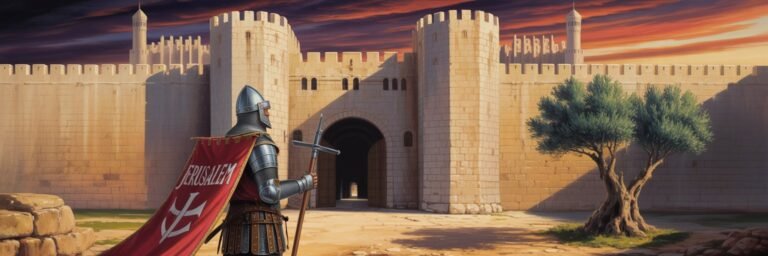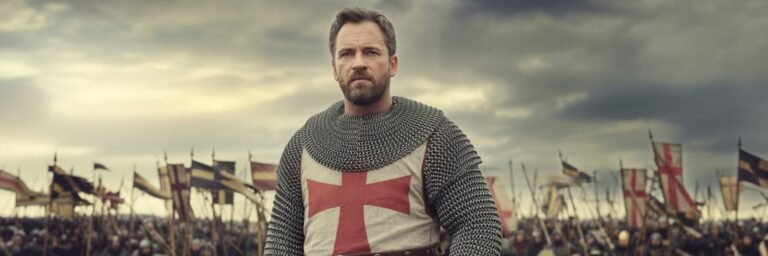Few episodes in history are as filled with high drama, intense struggle, and profound consequences as the Crusades. Stretching from the 11th to the 15th centuries, these ‘Holy Wars’ were instigated by Christian Europe against the Islamic states of the Middle East. Characterized both by heroic deeds and horrific brutality, these tumultuous conflicts permanently influenced the course of world history. This analysis will explore the ten turning points that – in times of strategic successes, fateful errors, heroic feats, or disgraceful acts – shaped the Crusades’ direction and, ultimately, their legacy.
HISTORICAL BACKGROUND
The Crusades originated in the late 11th century against a backdrop of religious fervor, territorial ambition, and socio-political upheaval. The former ‘Roman Empire’ had fragmented into regional civilizations like the Byzantine Empire in the East and increasingly assertive kingdoms in the West. On the religious front, a schism had created a divide between Roman Catholicism and Eastern Orthodoxy, while Islam had emerged as a powerful religious and political force in the Middle East and North Africa. Sparked off by Byzantine Emperor Alexius I’s call for military assistance against the Seljuk Turks, Pope Urban II launched the First Crusade in 1095; thus, setting the stage for nearly two centuries of religiously charged warfare.
THEORIES AND INTERPRETATIONS
Historians offer a variety of interpretations to explain the motivations and drivers of the Crusades. Some view these wars primarily through the lens of faith, emphasizing the genuine religious ardor of the Crusaders and the theological doctrines that justified such warlike ventures. Others argue that economic and social factors — notably the ambition of younger sons of nobility who had no inheritance and needed to carve out their own territories — played a critical role. Furthermore, the geopolitical strategy of the Papacy in asserting its authority over secular rulers is another significant perspective.
Turning point 1: The capture of Jerusalem in 1099 is often seen as the defining success of the First Crusade. After intense fighting and a brutal massacre, the Crusaders established the Latin Kingdoms, effectively Christianizing the Holy Land, at least temporarily.
Turning point 2: The establishment of the military-monastic orders, such as the Templars and the Hospitallers, despite introducing disciplined fighting units to the Crusader armies, ironically fostered rivalries and contributed to future strategic failures.
MYSTERIES AND CONTROVERSIES
The Crusades remain a fertile ground for historical controversies and persistent mysteries. These range from the mind-boggling brutality of the Crusaders, particularly during the sacking of Jerusalem, to the miscalculations that led to avoidable disasters.
Turning point 3: The failure of the Second Crusade (1147-49), despite the direct involvement of European monarchs like Louis VII of France and Conrad III of Germany, marks a pivotal moment when it became clear that the initial success of the First Crusade could not be replicated easily.
Turning point 4: The notorious sack of Constantinople in 1204 during the Fourth Crusade, orchestrated by Venetian interests, marked the point of no return in the relationship between the Western and Eastern Christian worlds, with consequences far beyond the scope of the Crusades themselves.
SYMBOLISM AND CULTURAL SIGNIFICANCE
The Crusades have a rich tapestry of religious and secular symbolism. They shaped understandings of ‘Christendom’ and ‘jihad,’ influencing contemporary views of religious warfare, martyrdom, and sainthood. The Crusades’ narratives have been appropriated and misappropriated for various ideological purposes over the centuries, from chivalric romances to territorial nationalism.
Turning point 5: Saladin’s retaking of Jerusalem in 1187, followed by the magnanimity he showed towards its Christian inhabitants, offered a contrasting narrative to the Crusaders’ earlier brutalities, shaping Muslim memories of the Crusades.
Turning point 6: The adoption of the cross as the Crusaders’ symbol, associated with suffering and redemption, intensified religious fervor and consolidated the identity of the Crusading armies.
MODERN INVESTIGATIONS
Modern scholarship continues to unravel new aspects of the Crusades’ history, from the grassroots enthusiasm for the wars to the complex interactions between the Crusaders and the local populations.
Turning Point 7: The ascendance of Mamluk Sultanate, post the death of Louis IX during the Seventh Crusade (1248-54), strengthened the Muslim world’s ability to resist Crusader incursions.
Turning point 8: The failings of the Ninth Crusade (1271-72) signaled the final attempt to regain the Holy Land, marking the waning influence of the Crusading movement.
LEGACY AND CONCLUSION
The legacy of the Crusades is marked by religious tension, cultural exchange, and far-reaching geopolitical shifts.
Turning point 9: The fall of the last Crusader stronghold in Acre in 1291 heralded the end of the Crusader states’ era and marked the Crusades’ ultimate military defeat.
Turning point 10: In the longer term, the initial impetus of the Crusades indirectly led to the resurgence of Western Europe, as the interaction with the East catalyzed trade, disseminated knowledge, and spurred the Renaissance.
Both inspiring and disturbing, the Crusades are important not only as historical events but also for how we interpret and engage with our diverse and shared past. Whether one views them as noble endeavors or misguided ventures borne out of fanaticism, understanding the Crusades is critical for those who seek to understand the complexities of our world’s history.



